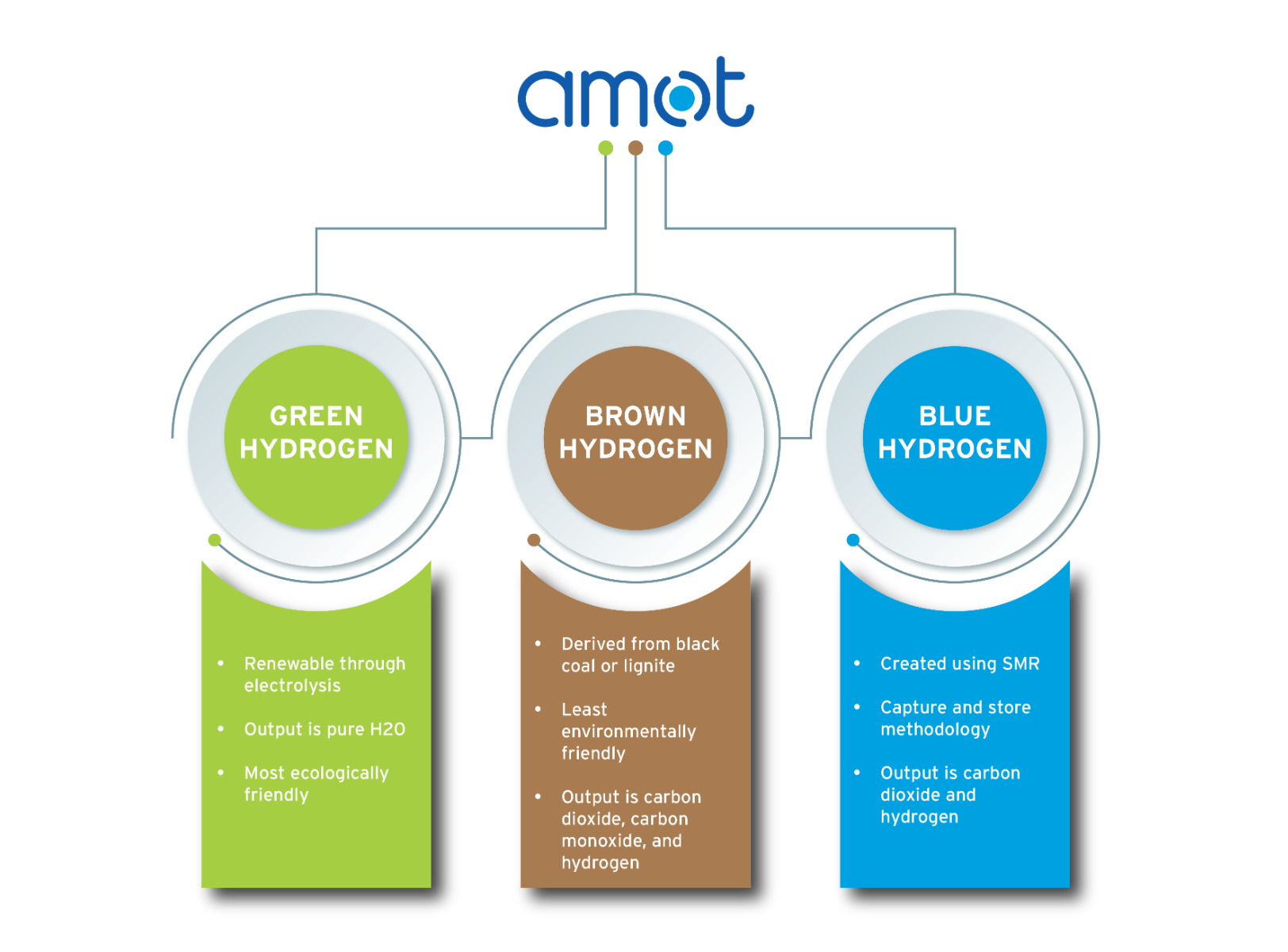What is hydrogen fuel?
Hydrogen is an energy carrier that can be used to store, move, and deliver energy produced from other sources. Hydrogen can be produced from a variety of domestic resources, such as natural gas, nuclear power, biomass, and renewable power like solar or wind. These qualities make it an attractive fuel option for transportation and electricity generation. Hydrogen fuel can be used to power cars, homes, portable power, and many additional applications
Today, hydrogen fuel can be produced through several methods. Each method requires energy to drive the chemical reaction to isolate hydrogen from, most commonly, water, coal, methane, or ammonia. These methods are given “colors” that differentiate how they are produced and how environmentally friendly each method is.
Why are there colors of hydrogen fuel?
Green, blue, and brown hydrogen are all sources of fuel, but are created differently.
- Green hydrogen is created from renewable energy such as wind.
- Blue hydrogen is derived from fossil fuels, specifically natural gas.
- Brown hydrogen is produced from coal.
Although they are different in their origin, they share practical advantages in use depending on the available fuel source to generate the reaction. Each color represents a different process in creation.

What is Green Hydrogen?
Green hydrogen is the most environmentally friendly form of hydrogen production. It is produced via any renewable energy source. The most common currently is wind. Wind driven green hydrogen essentially has zero emissions. When discussing green hydrogen and its’ renewability, electrolysis should come to mind. Electrolysis is the process of isolating the hydrogen molecules from the oxygen molecules in H2O, or water. When broken down, electrolysis means electric separation of a cell. (Electro -a combining from representing electric or electricity (lysis -the disintegration of a cell by rupture of the cell wall or membrane) At the end of this process, you are left with pure water. This is the same water that was used in the beginning, hence renewable.
What is Blue Hydrogen?
Blue Hydrogen is typically created using natural gas. To create blue hydrogen, SMR or steam methane reforming is used. This process mixes methane with incredibly hot steam (with a catalyst present) to release the hydrogen output and carbon dioxide. These greenhouse gases are then captured and stored. This capture and store methodology is essential in preventing more carbon from being released and creating a more ecologically friendly fuel source.
What is Brown Hydrogen?
While green and blue hydrogen have promising environmental implications, brown hydrogen does not. Derived from black coal or lignite, the process of releasing hydrogen also releases carbon dioxide and carbon monoxide into the atmosphere. Brown hydrogen is the least beneficial hydrogen fuel source to the planet but is sometimes the only option locally due to fuel sources. This method is also called the coal gasification process.
How does AMOT support hydrogen fuel cells?
Hydrogen can be produced by several methods for end use in applications, such as a fuel cell. As part of the electrolysis (green), SMR (blue) or coal gasification process (brown) several pieces of equipment typically need cooling.
AMOT temperature control valves are an integral part in the cooling and temperature controlling process. AMOT valves provide highly accurate temperature control and are made of materials that can withstand the corrosive environments that many of these applications are in.
Submit the form below to connect with our hydrogen experts.
Learn more about our hydrogen offerings here >>










